
YOUR APRIASLEEP THERAPYUSER GUIDEFor the ResMed AirSense ™ 1 C
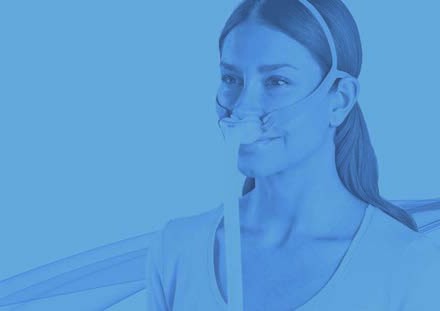
Use this QR link to our Sleep Apnea page for more information.

https://www.apria.com/sleep-apnea
WELCOME.Thank you for choosing Apria Healthcare as your home medical provider. You are receiving this package because your doctor has diagnosed you with sleep apnea and prescribed Positive Airway Pressure therapy. Positive Airway Pressure therapy—also known as PAP therapy or sleep therapy—helps millions of users feel more energized and refreshed.We are excited to accompany you on your journey to a better night’s sleep!Responsive. On-Time.Apria Delivers.
With over 275 branch locations in the U.S., Apria is ready to support patients every day and in times of need, with well-established emergency preparedness protocols in place. April has the knowledge, experience, and ability to provide excellent home health and equipment delivery services in all types of environments.
- MOBILIZED EFFORTS: Trained staff members available around the clock to coordinate urgent and after-hours orders and carry out emergency services
- 24/7 DELIVERY SERVICES: Deliveries to homes, shelters, and other areas pre- and post-catastrophic events 275+ LOCATIONS NATIONWIDE: Local branches with teams ready to serve patients, day or night
- EXTENSIVE INVENTORY: Home oxygen therapy and respiratory services, sleep therapy and supply refills, non-invasive ventilation therapy, and negative pressure wound therapy
Care is just around the corner.
Make sure your home address can be easily seen from the street during both day and night.If you are expecting a night delivery or visit, turn on the porch light.Check to see that your address numbers are easy to spot and read from the street. This will allow all Apria Healthcare and emergencyservices to locate your residence easily.Follow Emergency and Natural Disaster Instructions In the event of an emergency or natural disaster, follow the radio or television instructions of your local authorities.
Overview
Your doctor has prescribed PAP therapy because you have been diagnosed with sleep apnea. Sleep apnea occurs when a person repeatedly stops breathing for 10 or more seconds at a time while sleeping. These events may occur hundreds of times throughout the night, causing oxygen levels in the blood to drop, putting stress on the heart. If left untreated, sleep apnea is linked to many other serious conditions like high blood pressure, diabetes, heart disease, and stroke.This guide contains easy step-by-step instructions for using your PAP equipment and is designed to help you benefit from therapy as soon as your equipment arrives. Please watch the sleep apnea video on the enclosed DVD and review the manufacturer’s user guides along with the other educational materials that were included with your equipment. The sleep apnea video can also be found on Apria Healthcare’s website at www.apria.com/resource-center in the The “Video Library” section is located at the bottom of the screen. Additional information is also available at www.apria.com/sleep-apnea.
Your Device and SettingsA licensed Apria clinician has programmed your PAP machine with the settings prescribed by your physician. If your doctor recommendschanges to your PAP settings, please notify Apria Healthcare immediately, so that the clinician can make any necessary adjustments.
STEP 1
GET STARTED.Start your therapy tonight so you can feel refreshed in the morning.
- Open the box and unpack your PAP machine, humidifier chamber, tubing, mask, power cord and supplies.
- Attach the power cord and tubing to the PAP machine.
- Fill the humidifier with distilled water and insert the humidifier into the PAP machine. (It is recommended that you use distilled water. However, if you do not have distilled water on hand, in order to start your therapy today, bottled water can be used as a substitute to distilled water as a temporary measure.)
- Place the PAP machine on a table next to your bed. The height of the table should be lower than your head.
- Plug the power cord into an electric wall outlet.
 Please watch the sleep apnea video on the DVD and review the manufacturer’s user guides and other materials that were included with your equipment. The sleep apnea video can also be found at www.apria.com/resource-center in the “Video Library” section located at the bottom of the screen. www.apria.com/resource-center is located at the bottom of the screen.
Please watch the sleep apnea video on the DVD and review the manufacturer’s user guides and other materials that were included with your equipment. The sleep apnea video can also be found at www.apria.com/resource-center in the “Video Library” section located at the bottom of the screen. www.apria.com/resource-center is located at the bottom of the screen.
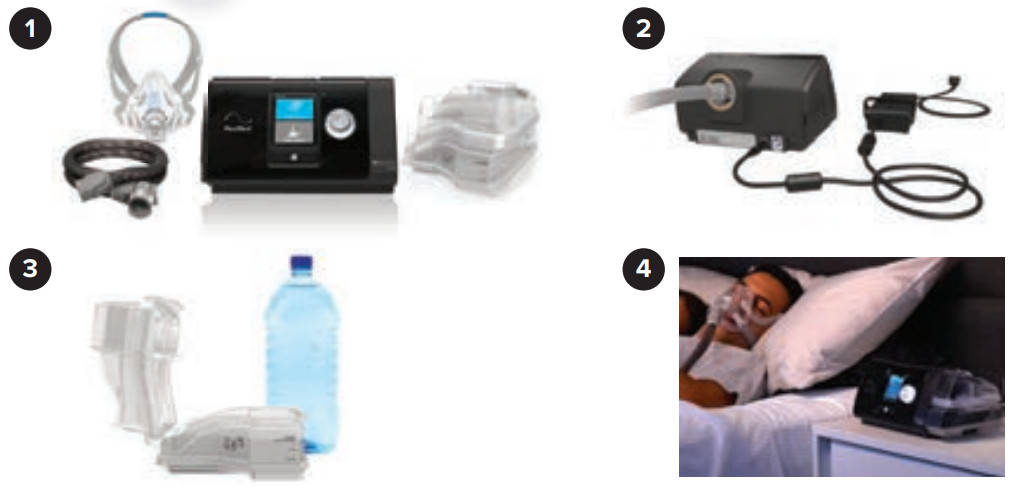
STEP 2
GET FAMILIAR WITH YOUR PAP EQUIPMENT.
If your doctor prescribed a specific mask and size, follow the fitting instructions provided by the manufacturer, then proceed to Step 3. If you received a mask with multiple cushions, follow the instructions below and on the next page.There is a mask cushion currently attached to the frame of your mask. This size fits most patients.Once you begin therapy, if your mask is leaking or feels uncomfortable, try removing the existing cushion and replacing it with a different size cushion. If you are between sizes, it is best to use the larger cushion. Use the Fitting Template (for nasal mask and full face mask) and/or the manufacturer’s instructions included with your mask for help.
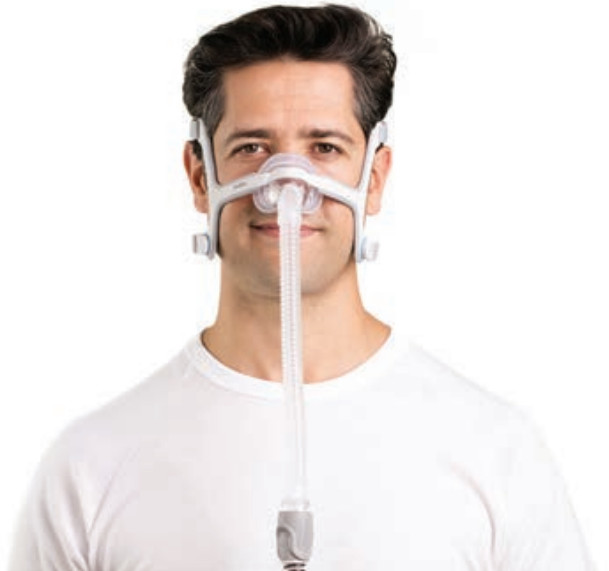
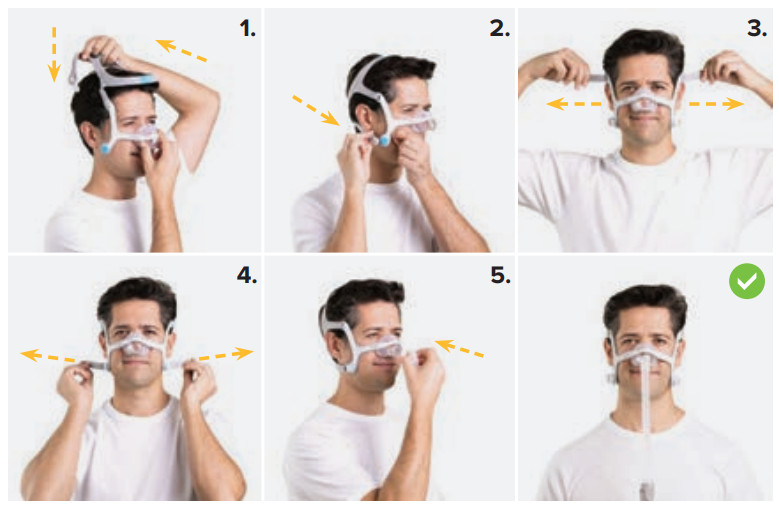
Nasal Mask
- Release the lower strap magnets from the frame of the mask. Make sure the logo on the headgear is facing outward. While holding the mask against your face, pull the headgear over your head.
- Position the lower straps so they both sit below the ears. Bring each of the magnets up to meet their corresponding clips on the frame.
- Adjust the fastening tabs on the upper straps until the mask feels even and stable.Do not overtighten. Reattach the fastening tabs.
- Repeat Step 3 with the lower straps. Reattach the fastening tabs.
- Connect the hose to the front of the mask. Ensure that the nasal mask fits securely over your nose. It is normal to feel some air escaping through the small air vents on the elbow of the hose.
Please refer to the manufacturer’s instructions for additional information on topics, such as:
- How to properly remove your mask
- How to remove and change the mask cushion
- How to adjust the length of the mask straps

Nasal Pillow Mask
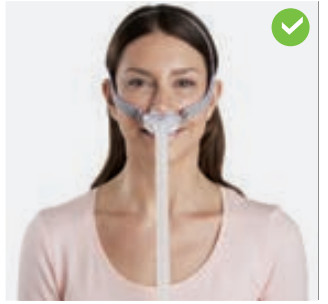
- Hold the pillows away from your nose with the left (L) and right (R) indicators correctly facing towards you.
- Guide the nasal pillows into your nostrils.
- Pull the headgear over your head by holding the bottom strap and stretching it around the back of your head.
- Adjust the top and bottom straps. The top strap should fit comfortably on the top of your head.
- Ensure that the nasal pillows fit securely into your nostrils with both pillows positioned upright.If not, move the mask away from your face and then place it back again.
- To achieve a comfortable fit, adjust the straps. Spread the straps apart to loosen, or draw them closer together to tighten.
Please refer to the manufacturer’s instructions for additional information on topics, such as:
- How to properly remove your mask
- How to remove and change the mask cushion
- How to adjust the length of the mask straps

Full Face Mask
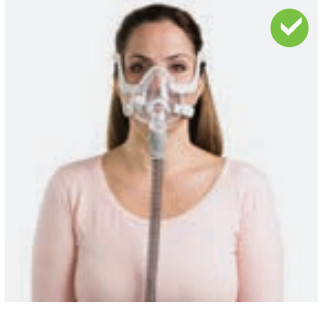
- Twist and pull both magnetic clips away from the frame.With the logo on the headgear facing outward, hold the mask against your face and pull the headgear over your head.
- Bring the lower straps below your ears and attach the magnetic clip to the frame.
- Undo the fastening tabs on the upper headgear straps. Pull the straps evenly until the mask is stable and positioned as shown in the illustrations. Reattach the fastening tabs.
- Undo the fastening tabs on the lower headgear straps. Pull the straps evenly until the mask sits firmly on the chin and reattach the fastening tabs.
- Connect the air tubing from your device to the elbow. Attach the elbow to the mask by pressing the side buttons and pushing the elbow into the mask.
- To achieve a comfortable fit, readjust the straps. Evenly, apply only enough tension so that a seal is achieved.
Please refer to the manufacturer’s instructions for additional information on topics, such as:
- How to properly remove your mask
- How to remove and change the mask cushion
- How to adjust the length of the mask straps
How to Attach Oxygen to Your PAP MachineIf you are using non-heated tubing, and you are also using prescribed oxygen, follow these instructions.Attach the oxygen tee adapter that was included in the box to your PAP machine.Next, attach the large-bore PAP tubing to the oxygen tee adapter. Finally, connect the small-bore oxygen tubing to the oxygen tee adapter.For detailed instructions on oxygen use, you should also review the PAP and oxygen manufacturer’s user guides included in your package.
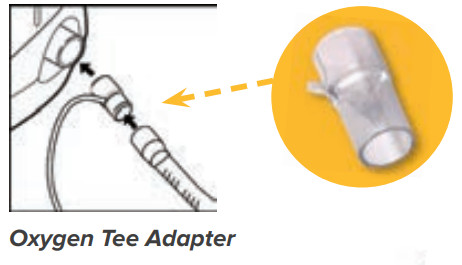
Oxygen Tee Adapter ClimateLineAir ™ and ClimateLineAir ™ Oxy Tubing
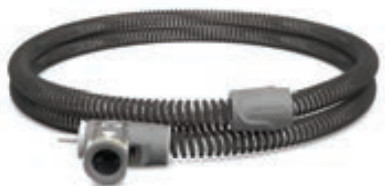
The ClimateLineAir™ heated tube is designed to maintain the temperature of the humidified air as it passes through the tube. ClimateLineAir™ Oxy comes with a built-in oxygen connector for patients who require supplemental oxygen.The HumidAir humidifier is part of ResMed’s Climate Control solution. It is designed to seamlessly integrate with the device and oer relief from dryness and congestion. The humidity level can be adjusted to suit your preference.When using ClimateLineAir™ and ClimateLineAir™ Oxy tubing, your device will automatically default to Climate Control Auto when you plug either of these tubes into your machine (unless your doctor has prescribed a specific heat and humidity setting).Please review the ClimateLineAir™/ClimateLineAir™ Oxy manufacturer’s user guide for additional information.IMPORTANT SAFETY NOTE: If you are using prescribed oxygen with your PAP device, be sure to observe all the fire and safety rules associated with the use of oxygen. Follow this sequence of steps when turning your oxygen on and off.
- Always turn your PAP machine ON before turning ON the oxygen flow from your oxygen source.
- Always turn OFF the oxygen flow from your oxygen source before turning OFF the PAP machine.
If You Have ClimateLineAir ™ Heated Tubing:Attach using the illustrations and directions provided here.
- Make sure the machine is turned on.

- Hold the orange cuff of the air tubing and line up the air tubing connector with the connector port.

- Push the cuff until the connector clicks into place.
 “ClimateLine Air connected” will briefly display on the device screen.
“ClimateLine Air connected” will briefly display on the device screen.
If You Have ClimateLineAir ™ Oxy Heated Tubing:Attach the oxygen using the illustrations and directions provided here.
- Remove the cap from the oxygen connector.

- Connect the oxygen supply tubing to the oxygen connector. Make sure it is firmly attached.

START YOUR PAP MACHINE.
- First, put on your mask. Next, attach the tubing to the mask.

- Lie down and take four deep breaths.The machine should start automatically.If you do not hear the machine start, press the Start/Stop button. Relax and begin to take slow breaths through your nose.

- Check for air leaks. Small leaks are acceptable. If large leaks occur, try the following:• Grasp the mask frame and lift it away from your face. The cushions should also lift off your face. Lightly place the mask back on your face.• If large leaks still exist, adjust the headgear. If the headgear is either too tight or too loose, it can cause leaks.• Additional tips for managing mask leaks are provided on the next page.You should also review the manufacturer’s user guides are provided in your package.
Helpful Tips
For Nasal and Full-Face Masks
- To resolve leaks at the upper part of the mask, adjust the upper headgear straps.
- For leaks at the lower part, adjust the lower headgear straps.
- When adjusting straps, loosen or tighten both the left and right straps so that adjustments are made evenly.
- Adjust only enough for a comfortable seal.
- The upper strap adjustment is the key to seal and comfort.
- Do not overtighten the lower straps. They mainly serve to keep the cushion in position.
For Nasal Pillows Masks
- Position the pillow cushion tips into your nostrils so they sit comfortably under your nose without any gaps. Pull the mask away from your face, then place it back to get a comfortable fit.
- Adjust the side straps evenly by pulling downwards; the mask should feel secure and comfortable against your face. Do not overtighten.
- If leaks persist, try the next larger set of cushions.
- If the pillow is not staying in place in your nostrils, try the next smaller cushion size.
Handwashing TechniqueThorough handwashing must be done prior to all procedures. Contaminated, dirty hands are one of the most common sources of infection.
- Wet your hands thoroughly with warm water.
- Use soap.
- Scrub hands for 20 seconds using a rotary motion and friction. Wash:• Back and palm of each hand• Between all fingers• FingernailsNeed a timer? Hum the “Happy Birthday” song from beginning to end twice.
- Rinse your hands under the running water.
- Dry on a clean towel or with a paper towel.For additional good health habits, visit our patient education section on apria.com.
GET COMFORTABLE WITH YOUR THERAPY.
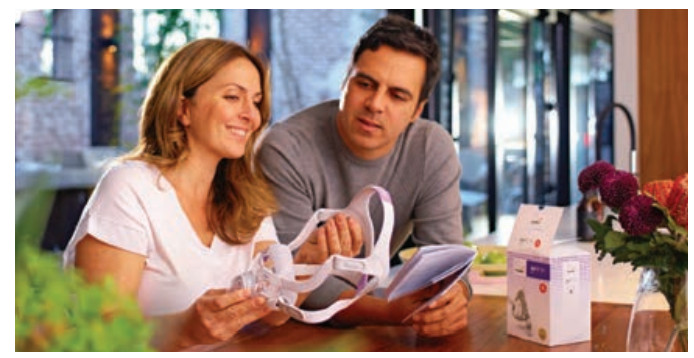
Use your PAP therapy during all hours of sleep, including during naps. Some people may need up to one or two weeks to adjust to PAP therapy, but the benefits are well worth it.Ways to help you adjust:
- Try watching TV or reading while wearing your mask and headgear. Turn on the PAP device for short periods of time while wearing your mask to get used to the pressure.
- Use your equipment every night.
- Keep the device turned on for as long as you can tolerate, building up each night until you have reached at least 4 hours per night.
- Keep practicing until you are using PAP therapy during all hours of sleep, including during naps.
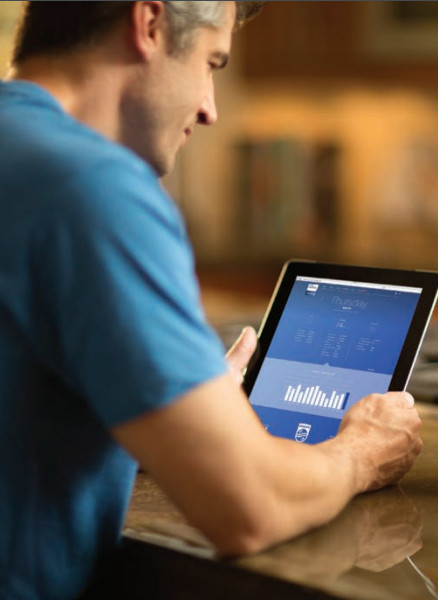
TRACK YOUR PROGRESS.

You can track your progress by registering for ResMed’s myAir™ application at www.resmed.com/myAir or by downloading the myAir™ by ResMed app from the App Store on your smartphone. You can view your daily sleep score and the previous night’s results. You can also access other helpful information, like videos and guides designed to help you stay motivated in adhering to your PAP therapy.Note: Data will be available following the first night using the machine after you register.
GET SUPPORT.
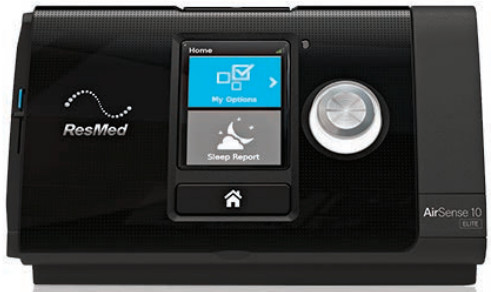
If you are having difficulties getting used to therapy, try using your machine’s “comfort features” to help.If you are having difficulties getting used to therapy, try using your machine’s “comfort features” to help.Do you have a dry nose or throat, or a runny nose?Increase the humidity level.Do you have a dry nose or throat, or a runny nose?Are there droplets of water or condensation inside your nose, mask, or tubing?Decrease the humidity level.How to Change the Humidity Level:

This information is intended for your general knowledge only and is not a substitute for medical advice or treatment for a specific medical condition. Should you have any healthcare-related questions, please consult your doctor.
Is the air pressure making it difficult for you to fall asleep?Turn on the Auto Ramp or increase the Ramp Time.Do you feel bloated?You may be swallowing air. Turn on the Auto Ramp or increase the Ramp Time.Do you feel like you are not getting enough air?Turn the Ramp Time to “off.”How to Change the Ramp Time:

Do you have sore or dry eyes?Adjust your mask or headgear. It may need to be repositioned. Refer to the instructions provided in the manufacturer’s user guide for your mask. Also, review Steps 2 and 3 in this guide.Are you experiencing redness on your face where the mask touches the skin?Your mask may be too tight. Try adjusting your headgear. If redness persists, contact Apria Healthcare.Do you have nasal, sinus or ear pain?You may have a sinus or ear infection. Stop using your machine and contact your doctor.
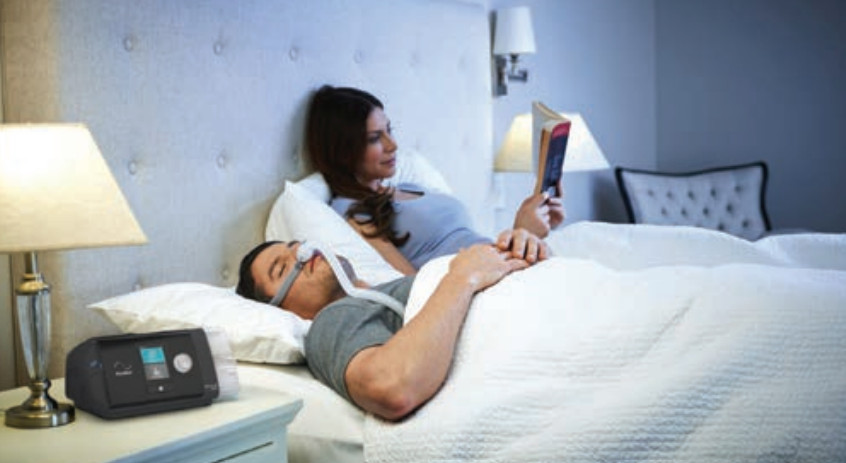
CLEANING, MAINTENANCE ND REPLACEMENT
- Oil from your face and ingredients in facial products can cause the PAP mask cushions to wear down and decrease the useful life of the mask. Get in the habit of wiping down your mask each day, especially the areas that come in contact with your skin. Clean your mask and headgear weekly according to the instructions in the mask user guide.
- Wash the water chamber and air tubing in warm water, using a mild detergent. Hand washes only. Do not wash in a dishwasher, as it can deteriorate the plastic.
- When needed, wipe the exterior of the machine with a dry cloth.
- Your device has an automatic air filter reminder. Refer to the manufacturers’ instructions for information on how to replace the filter.
REPLACE SUPPLIES REGULARLY
Replace your sleep supplies regularly. This helps to ensure a good mask seal and reduce the buildup of bacteria, viruses, and allergens. 1 Ordering fresh, clean supplies to replace your old items helps improve the comfort of your mask and maintains the overall effectiveness of your therapy.
| Recommended Replacement Schedule | |||
| Twice Monthly• Nasal mask cushions andnasal pillows• Disposable filters | Once Monthly• Full-face mask cushions | Every 3 Months• Mask frame• Tubing (standard or heated) | Every 6 Months• Headgear and chin straps• Humidifier water chamber• Non-disposable filters |
Please note that the frequency of resupply and your insurance’s coverage of supplies will be governed by your insurance plan and may differ from the schedule provided above.
Source:1. Horowitz A, Horowitz S, Chun C. CPAP Masks are Sources of Microbial Contamination. SleepHealth Centers, Div. of SleepMedicine, Brigham and Women’s Hospital, Harvard Medical School, Boston. APSS Poster; 2009.
April’s customer service team of Kaiser Permanente experts can be contacted 24 hours a day, seven days a week:888.452.4363April is committed to safe, quality patient care.We encourage you to report any concerns to your local Apria Healthcare branch. If your concern is not resolved, please contact the Patient Satisfaction team at the number listed below.800.260.8808

ClimateLineAir and myAir are trademarks and/or registered trademarksof the ResMed family of companies.©2021 Apria Healthcare Group LLC SLP-4322 Rev. 07/21_v7
References
[xyz-ips snippet=”download-snippet”]

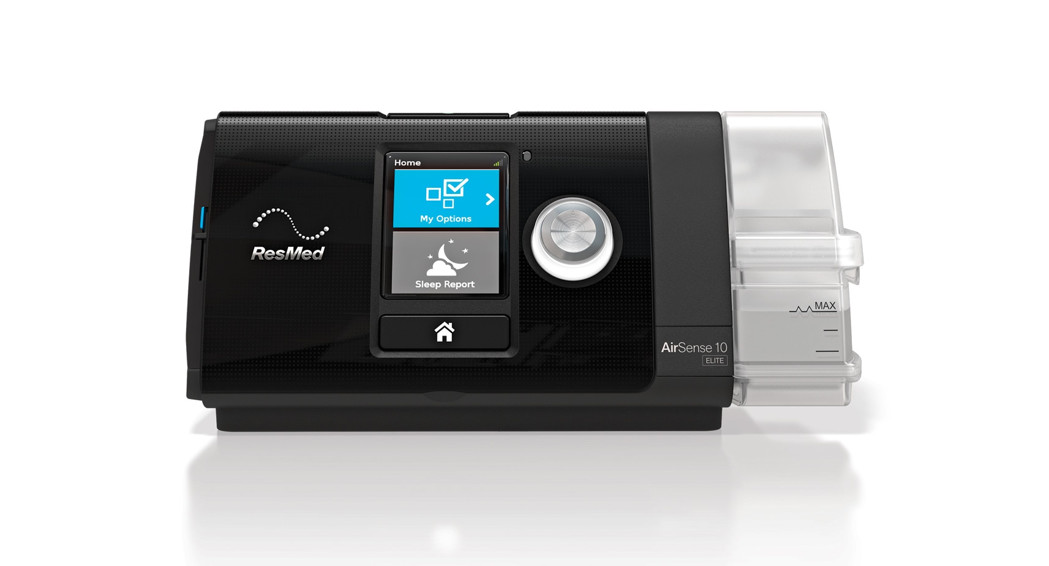
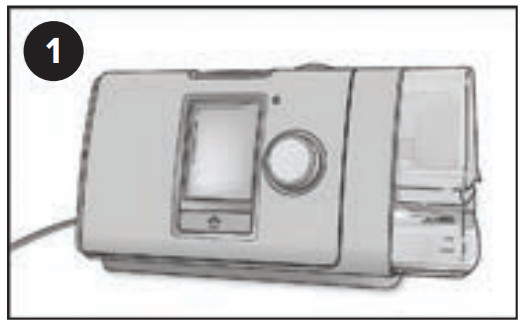
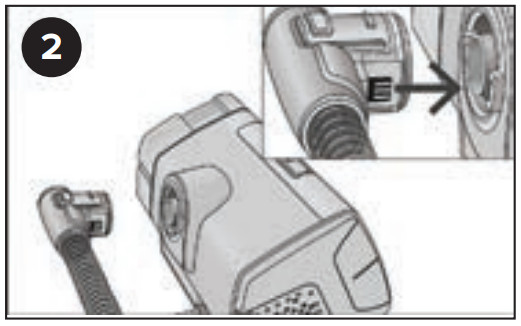
 “ClimateLine Air connected” will briefly display on the device screen.
“ClimateLine Air connected” will briefly display on the device screen.


